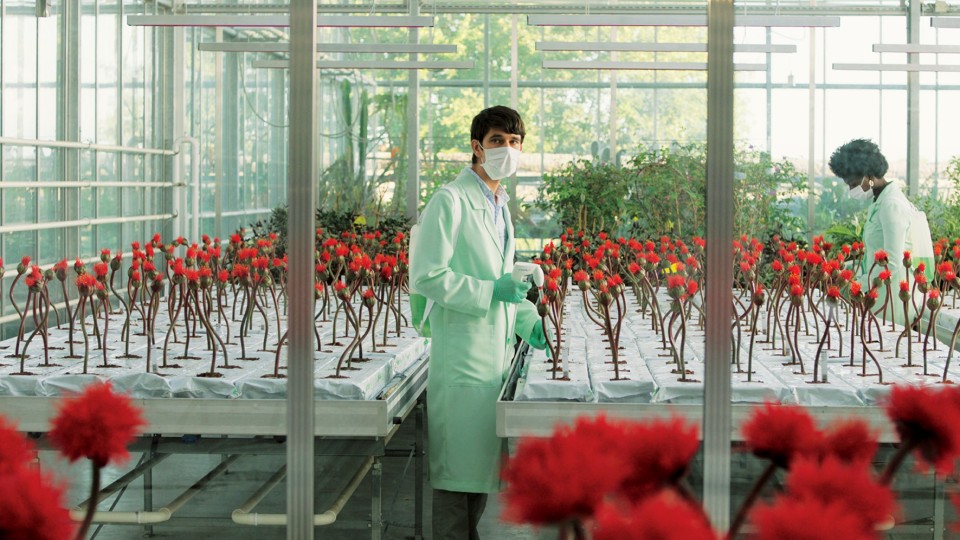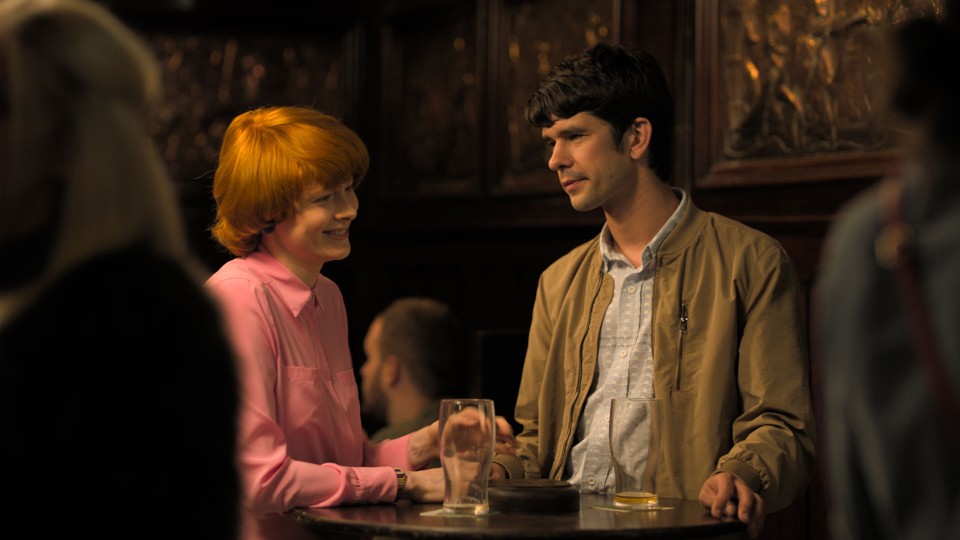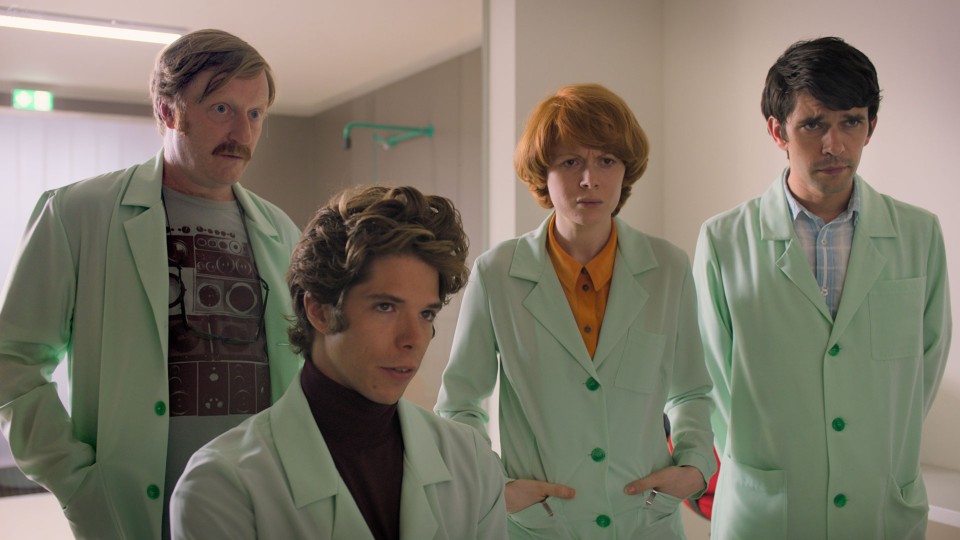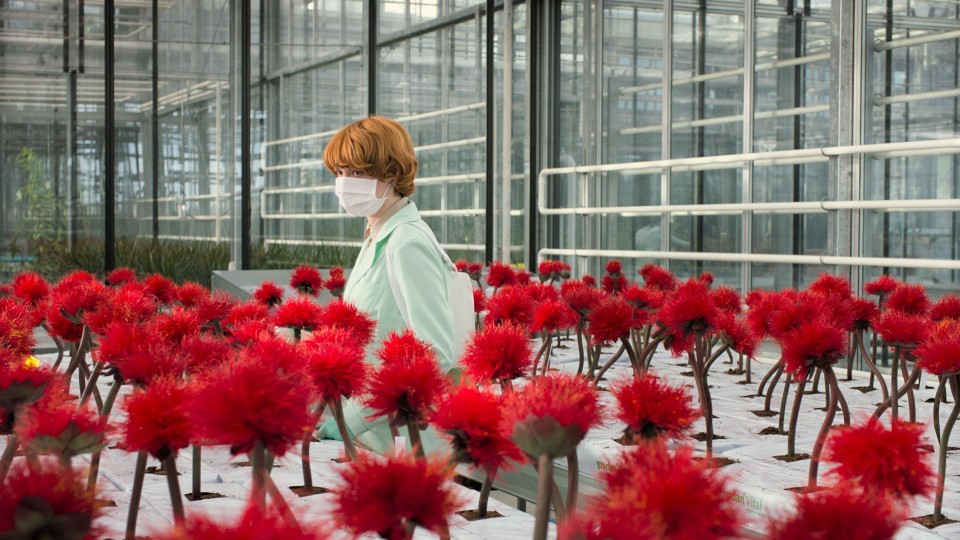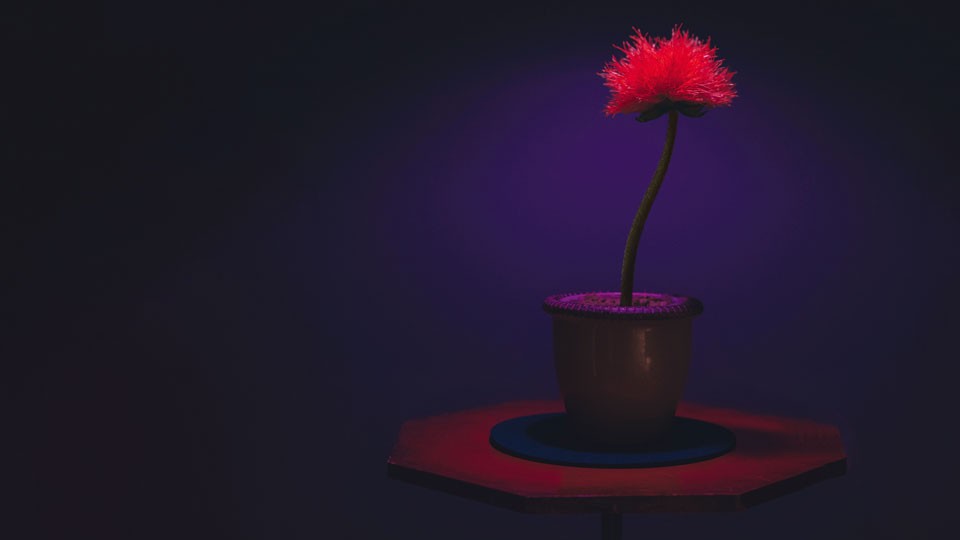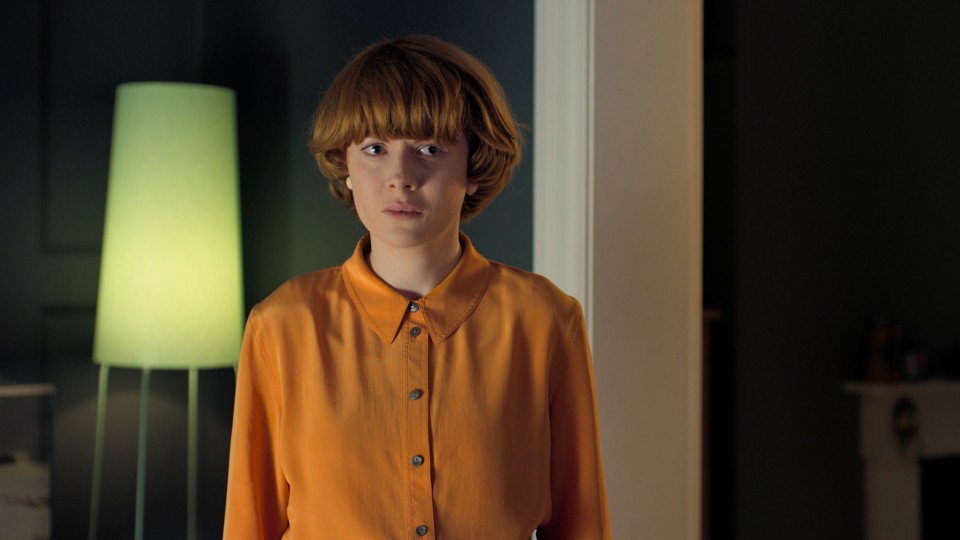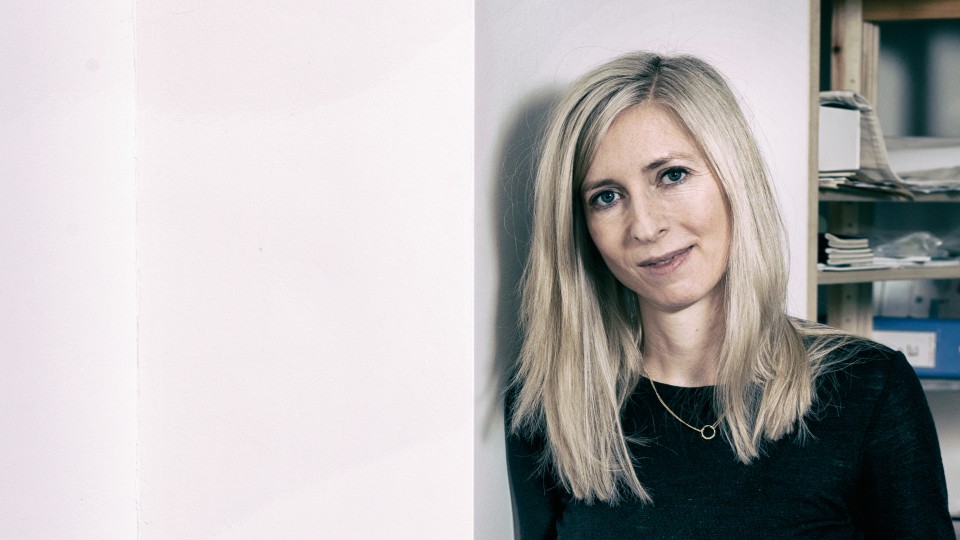Alice’s son Joe satisfies her maternal needs, and in her career she has also achieved tangible success: the flower she has
genetically engineered, Little Joe, is a beautiful sight which promises to bring happiness to everyone around it. But suddenly
things seem to turn against Alice in almost indefinable ways. In her fifth feature film, LITTLE JOE, Jessica Hausner unleashes the forces of cinema only to have them combine in virtuoso fashion, creating on film a homage to
doubt.
Generally with your films there is a small impulse which sets in motion something much bigger. What was it that prompted you
to venture into the world of science for your fifth feature film?
JESSICA HAUSNER: The initial impulse for LITTLE JOE was connected with Frankenstein: this time I found myself imagining a female version of
the story. During initial discussions with my co-writer Geraldine Bajard the idea very quickly emerged that the female protagonist
could be a genetic engineer, which is a contemporary issue. Another feature of the story we wanted was a slightly eccentric,
ironic happy end. Instead of killing his creation at the end, the Frankenstein character and the creature would live with
one another in symbiotic harmony.
Alice, the protagonist of LITTLE JOE is the mother of a teenage boy as well as an ambitious, talented genetic engineer. One of the fundamental conflicts in LITTLE JOE resides in the contradiction between her two aims: to be a good mother and also to advance in her career. Two opposites which
are difficult to reconcile. Now she's working in plant engineering as a genetic breeder – while as a mother she is also a
"genetic breeder". So the opposites are also identical. It seems to be a basic tenet of LITTLE JOE that everything can be the same while simultaneously containing its opposite.
JESSICA HAUSNER: I'm interested at a very fundamental level in ambivalent situations that can't be reconciled, that are essentially contradictory
and don't have any answers. The kind of situation that could be described as a Gordian knot. The way Alice lives her life,
loving both her child and her profession while being unable to do justice to either, constitutes a classic Gordian knot. And
the tension this creates also drives the leading protagonist in LITTLE JOE.
Another issue which runs through your work is the question of how reliable or imprecise our perception is: perception of our
surroundings, of the people who are close to us, even of ourselves.
JESSICA HAUSNER: That is also a contemporary theme. It strikes me more and more that we are living in a period of multiple truths. You can't
unambiguously differentiate between right and wrong any more, whether as a consequence of scientific developments or an excess
of information over the Internet. People always say Internet sites should be screened for plausibility – but who's going to
do the screening? It simply isn't possible, when faced with this excess, to fish out the "right" information. What I find
interesting about all this is that today science has taken over the function religion used to perform, by saying what is right
and what is wrong. Today there is a very marked faith in science, because people yearn so strongly for an ultimate answer
that is demonstrably objective. So is genetic engineering good or bad? During our research we conducted a lot of interviews
with scientists and came to the conclusion that you get very different views depending on who you talk to. The more you study
the issue, the more muddled the picture becomes. That's why it seemed absolutely imperative to make a genre variation film
where the expectation, the desire to know what the answer will be in the end, leads to a surprising range of answers. There
are solutions in LITTLE JOE, but everyone can choose the one they want.
LITTLE JOE is a very subtly and intricately constructed drama playing with the concept of opposition on various levels: it's about nature
and artificiality, closeness and distance, obligation and freedom, jokes and fears, being a mother and having a career, working
alone and in a team, etc. This time you worked from the very start with your co-writer Geraldine Bajard. Would it be true
to say that the task of writing the screenplay together was a very finely moderated balancing act?
JESSICA HAUSNER: Having two people play around with a subject is the best way of creating this gripping tension of opposites. If I argue in
one direction, it's quite possible that Geraldine will argue in another. In that way we enact a sort of good cop/bad cop routine
with each other which is very important. We've been working together since Lourdes, which is a film I regard as a turning point in my creative career. Ever since then I've felt the need to make films which
present contradictory arguments. It was the moment I realized I couldn't create that by myself: I needed a partner. And ever
since then, that's what Geraldine has been. We share a similar sense of humor, while at the same time she often has very different
opinions. It's precisely that friction which makes things work between us so well.
Playing with opposites is a fundamental characteristic of comedy. This time the delight you take in responding to the disconcerting
and menacing fundamental themes of the story with dry humor comes across very strongly. Why? How is this mischievous humor
integrated?
JESSICA HAUSNER: In my view the dry humor develops from a moment of realization, when you suddenly appreciate how ridiculous you are. And
when are people ridiculous? Possibly when they believe they are right. And that's the basis of the dry humor in LITTLE JOE.
It's not only about the characters: the film also makes fun of our attitude towards film history. Our inclination to think
when you watch a film that one and one makes two, and that the story must make sense, is turned into a joke. As far back as
Lourdes there were moments where I provided an impulse to laugh at precisely the most taboo moments. What I'm trying to say is that
you can laugh at religion, you can laugh at science, and it comes at the moment when you realize we are all at the mercy of
the longing to find answers – when there aren't any answers.
To what extent does the film reflect your interest in subjects like the invasion of our private sphere by modern technology,
the ethical responsibility of scientists and the dystopia resulting from enforced conformity of humanity?
JESSICA HAUSNER: The last subject is precisely what I didn't want to touch upon. I would never make a science-fiction film which ends up with
everybody trudging through life dehumanized, homogenized. I think that's an outdated cliché. It's a good thing that there
are novels like 1984 and Brave New World, but that's a long time ago. These days the point is very different: that is simply what our future looks like. So let's
make friends with it! It will be a future where people are subjected to genetic engineering and optimized, and we may live
together with computers that look like human beings. I'm really not interested in thinking about how wonderful it was in the
past, when having a crooked nose still meant having a crooked nose. In the future we will optimize everything. I don't feel
called upon to pass judgement about whether that will be good or bad. What interests me is thinking about what it will do
to us and daring to look into the future without saying that it will necessarily be bad. It will have its advantages and disadvantages,
as is always the case.
Apart from the thematic aspect, the second major sphere of the film is the visual. One of the film’s protagonists is the flower LITTLE JOE. How did this flower take shape?
JESSICA HAUSNER: At first we considered using real flowers. But we quickly had to abandon that ideal for logistical reasons, because over
a long period you have too little control over real plants. After all, the flowers had to look exactly the same for three
weeks, while we were filming. So then I found a sample of what I had in mind: Scadoxus Haemanthus, also known as the blood
lily. I showed this to various designers and props makers, and I asked them to submit their ideas. We chose Marko Waschke
to work on the film because he appreciated the humorous undertone very well. LITTLE JOE was never intended to be a scientific thriller. So then Marko Waschke used a team of 20 people to create the flowers we needed,
hundreds of them, in just a few weeks. They all had to be in four stages of blossoming: closed, half open, open in the center
and completely open.
Ever since Lovely Rita, colorfulness has been a crucial factor in your work. But it has probably never been as dominant as it is in LITTLE JOE : starting with the red hair of the protagonist, the red of the flowers, various shades of green for the laboratory
What
considerations were uppermost in your collaboration with your sister Tanja Hausner for costumes and with Katharina Wöppermann
for set design?
JESSICA HAUSNER: It was very clear to me that the flowers had to be red. Red is a signal color which has featured in all my films. Rita has
red shoes, Flora has a red suitcase, my protagonist in Lourdes has a red hat. That color was a given. As for other colors, my sister Tanja is increasingly influential in those decisions.
The red flowers and the light green laboratory coats were the basis of the color concept. The colors are so important, our
cameraman Martin Gschlacht insisted when he was setting up each scene that the stand-ins were also in costume, because the
colors play such an important role in determining the lighting. The images only work with the costumes.
You have worked with cameraman Martin Gschlacht since your first films, but this time your collaboration is particularly impressive
in terms of the camera movements: the horizontal and revolving motions on the one hand, and very startling ongoing tracking
shots. What was the thinking behind this?
JESSICA HAUSNER: The interplay between onscreen and offscreen is a constant factor in our work. How does the camera behave in relation to
the characters in the scene? Our aim is to expose the perspective, the subjective perspective. I want to convey the idea that
my perspective is only one possible way of viewing the events – not an all-encompassing view. My films don't depict seamless
worlds; on the contrary, they suggest quite clearly that even I don't have an unambiguous view of the events. I show a segment,
but maybe at exactly that moment something is happening off camera which would be important but which, unfortunately, we've
all missed. Maybe the answer would be precisely there. There are tracking shots past individuals. When a camera tracks towards
someone it creates the hope that what the person is saying – and its significance for the story – will make sense. But if
the camera tracks past that person and towards a curtain, it conveys with a sort of wink of the eye that everything is relative,
and that we don't know whether that character is right. It denies authority to our view of the events.
The sound and the music are particularly present in LITTLE JOE. Which factors made you choose to work with music by composer Teiji Ito?
JESSICA HAUSNER: Teiji Ito has also created the sound for films by Maya Deren, whose cinema work always inspires me. Maya Deren has an extremely
clear understanding of this medium and knows how to push it to the limits. The music is one factor that makes her film Meshes of the Afternoon so great. It was through her that I became aware of Teiji Ito. On the one hand his music is captivating, provoking emotion,
while on the other hand it establishes a curious distance and creates its own independence. While the music emphasizes the
film, at the same time it also stands in opposition to it, as a completely solo work.
The invitation to present LITTLE JOE in competition for the Palme d'Or means you have reached the pinnacle of artistic recognition, where it still remains difficult
for a woman to assert herself against the male presence. What does this invitation mean for you?
JESSICA HAUSNER: Having a film in competition at Cannes certainly does make a difference. I can see that in people's reactions, in the way
my previous work is now being perceived and, in particular, taken seriously. It's an important step, and I'm very happy that
it's worked out this way, especially because we really hadn't expected it. LITTLE JOE is the first of my films when I thought
to myself: "Wherever this takes me, I'm not going to have my filmmaking pigeonholed. I'm going to make films exactly the way
I think they should be made, and I want to enjoy the things that appeal to me, and I just hope they will appeal to other people
as well." It's now almost 20 years since I made my first feature film, Lovely Rita, and I think I've reached the stage where I've developed something over the years, together with my people Martin Gschlacht,
Karina Ressler, Tanja Hausner and Katharina Wöppermann. Of course one film might be better received than another. But we are
simply going to continue on our path. With the courage to make movies that are sparkling – and strange
...
Interview: Karin Schiefer
May 2019
Translation: Charles Osborne

